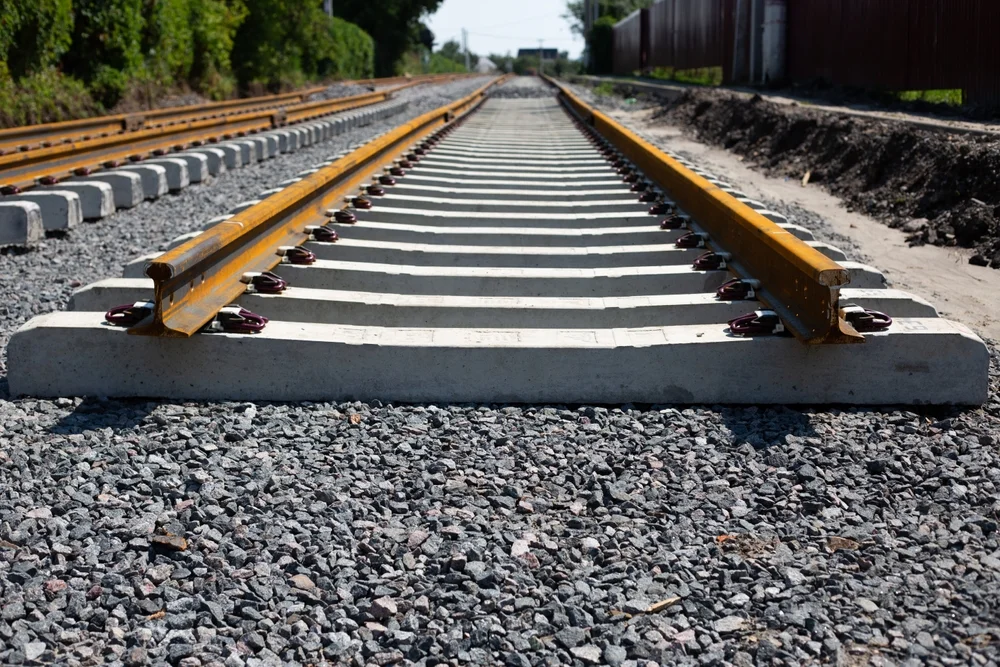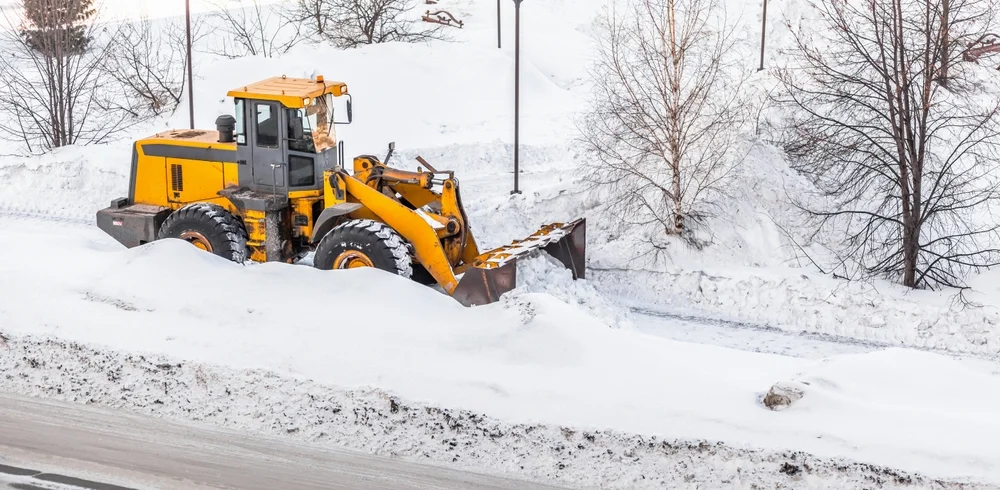Roadside and railway corridors require constant maintenance to ensure safety, visibility, and operational reliability. Overgrown vegetation can obstruct sightlines, conceal signage, damage infrastructure, and increase the risk of accidents or fires. Transport authorities, municipal maintenance crews, and private contractors all have a shared responsibility to keep these vital corridors clear and safe for public use.
Heavy-duty mulchers have become a preferred solution in this field because they allow vegetation to be cut, shredded, and dispersed in place in a single operational pass. This approach not only speeds up maintenance schedules but also reduces the need for additional machinery, hauling operations, and debris disposal. The result is a more efficient, cost-effective, and environmentally responsible way to manage vegetation in high-traffic and high-risk environments.

Vegetation management along roads, highways, and railway lines is far more than a matter of appearance. It is a core element of transport safety, operational reliability, and infrastructure preservation. When overgrowth is left unchecked, it can obstruct visibility, interfere with signals, damage structural components, and even create fire hazards. These risks threaten not only the functionality of transport systems but also the safety of drivers, passengers, and maintenance crews.
Heavy-duty mulchers provide an advanced solution to these challenges by combining speed, cutting power, and operational precision into a single, efficient process. Unlike conventional clearing methods that require multiple passes and separate equipment for cutting and debris removal, mulchers cut and process vegetation in place, leaving a clean, stable, and safer corridor. This approach allows teams to maintain road and rail environments to a high safety standard while reducing downtime, traffic disruption, and overall maintenance costs.
Clear sightlines are one of the most critical factors in preventing transport-related accidents. Drivers approaching sharp curves, railway operators monitoring upcoming signals, and emergency vehicles navigating high-speed corridors all rely on unobstructed views to react quickly and appropriately. Even a small amount of overgrowth in the wrong location can obscure signage, block signal lights, or hide potential hazards.
Heavy-duty mulchers address this by efficiently removing thick brush, tall grasses, saplings, and even mature trees that encroach on visibility zones. Their ability to handle dense vegetation in a single pass ensures that safety margins are restored quickly and maintained over longer periods. By mulching material directly on site, crews eliminate the need to pile debris along the verge or transport it elsewhere for disposal.
The mulch layer left behind offers several operational benefits: it suppresses rapid regrowth, maintains a neater appearance, and prevents soil erosion along embankments or cuttings. This means corridors remain clear for extended periods, reducing the number of maintenance interventions required each year and keeping transport systems running with fewer interruptions.
Vegetation that grows too close to transport infrastructure can cause significant and costly damage. Roots can undermine roadside barriers, disrupt railway ballast, and interfere with drainage systems. Overhanging branches may strike passing vehicles, damage rail cars, or compromise overhead electrical lines and signal systems.
In addition to these mechanical risks, uncontrolled vegetation along transport corridors poses a serious fire hazard, particularly in dry climates or during peak summer heat. Sparks from train brakes, overhead electrical faults, or passing vehicles can easily ignite dry grass and brush, leading to rapid fire spread that threatens infrastructure and public safety.
Heavy-duty mulchers mitigate these risks by removing excess fuel loads and processing plant matter into smaller, moisture-retaining particles that decompose naturally. This reduces the flammability of the surrounding environment while also discouraging aggressive regrowth near sensitive installations. By maintaining a vegetation buffer around road and rail assets, mulchers help extend the life of costly infrastructure, minimise repair budgets, and protect the overall integrity of transport networks.

Vegetation management in transport corridors requires a balance of speed, safety, and precision that few environments demand as intensely. Crews must work within tight maintenance windows, often in spaces shared with active vehicle traffic or moving trains, while also respecting strict safety protocols and environmental regulations. This combination of factors means that every piece of equipment on site must perform efficiently and reliably under pressure.
Heavy-duty mulchers are purpose-built for these scenarios. They integrate cutting and debris processing into a single operation, removing the need for multiple machines and reducing the amount of time spent in high-risk areas. Whether clearing roadside embankments or maintaining vegetation along a busy railway, they allow crews to complete work quickly, safely, and without unnecessary disruption to daily transport activities.
Transport maintenance windows are notoriously short. On an active railway line, clearance work may need to be completed in just a few hours between train schedules. On a busy highway, lane closures can only be authorised for limited periods to avoid excessive traffic delays. In both cases, any delay in vegetation management can result in increased operational costs, public safety risks, and penalties for contractors who miss deadlines.
Heavy-duty mulchers are engineered to maximise output in these constrained timeframes. Their ability to cut and process vegetation in a single pass eliminates the need to stop for debris removal or coordinate with secondary hauling equipment. This means crews can cover long distances in a single shift, whether they are maintaining a rural railway line that stretches for kilometres or a high-speed road corridor with multiple lanes and complex intersections.
The result is a measurable improvement in project timelines. Crews can:
For public works projects with strict service-level agreements, this level of operational efficiency is critical to both budget control and contractor performance.
Road and railway corridors rarely offer uniform, flat, or open ground. Instead, they often wind through a mix of steep embankments, uneven terrain, narrow rights-of-way, and restricted access points. In wet or unstable ground conditions, heavy equipment can quickly cause soil damage, destabilise slopes, or create ruts that require costly repair.
Heavy-duty mulchers are designed to operate effectively in these challenging environments. They offer the traction and stability to work on slopes, the manoeuvrability to navigate tight clearances, and the control to avoid damage to sensitive infrastructure such as drainage channels, railway ballast, and roadside barriers. Their low ground-pressure operation reduces soil disturbance, which is particularly important in erosion-prone areas or near watercourses.
This adaptability means that crews are able to:
By ensuring that every metre of the transport corridor, from the open stretches to the most remote or confined segments, remains clear and compliant, heavy-duty mulchers enable a complete vegetation management strategy that prioritises safety, efficiency, and long-term infrastructure health.
Managing vegetation along transport corridors is not just a matter of occasional clearance, it is a continuous operational commitment that demands precision, planning, and foresight. Without a structured approach, overgrowth can return quickly, threatening visibility, damaging infrastructure, and increasing the risk of accidents or service disruptions.
Establishing best practices for mulching ensures that work is completed safely, within regulatory frameworks, and with results that last well beyond the initial clearance.

Effective roadside and railway mulching starts long before a machine reaches the site. Close coordination with road transport departments, railway operators, and safety authorities is essential to align operational goals with safety requirements and traffic regulations. This collaboration ensures that crews have all the necessary permits, understand the operational constraints of the corridor, and are prepared to manage traffic flow while work is in progress.
Detailed planning is crucial because transport corridors are among the most regulated environments for vegetation management. A thorough preparation phase helps prevent unexpected stoppages, avoids conflicts with train timetables or peak traffic hours, and allows for the deployment of the right equipment for the job.
Planning steps to follow:
When all stakeholders are aligned before operations begin, delays are minimised, resources are used efficiently, and crews can focus on the work itself without administrative or logistical setbacks.
For smoother mobilisations, build this into a structured pre-shift routine informed by pre-operation checks.
Vegetation management in transport corridors is not a one-time task, it is a cyclical process that must be sustained throughout the year. Even after a complete clearance, vegetation will inevitably regrow, and without regular maintenance, it can quickly return to levels that threaten operational safety.
For municipalities and transport agencies, setting up a long-term maintenance plan is the most effective way to keep roads and railways consistently clear, safe, and compliant with regulations. This proactive approach reduces the risk of emergency interventions, which are typically more expensive, more disruptive, and more dangerous for crews.
Effective maintenance practices:
By committing to a predictable, year-round vegetation management cycle, agencies can ensure that transport corridors remain operationally safe, visually clear, and compliant with all environmental and safety standards. This not only extends the lifespan of infrastructure but also enhances public trust in the reliability of the transport network.
Pair the plan with simple, audit-ready maintenance checklists to keep routines consistent across crews.
“Keeping our transport corridors clear is not just about maintenance, it is about ensuring that people and goods can move safely and efficiently every day.”

Transport corridor maintenance is one of the most highly regulated fields in vegetation management. Crews operating in these environments must work within a framework of strict safety protocols and environmental regulations that are designed to protect workers, the travelling public, and the surrounding ecosystem.
From highways carrying thousands of vehicles per day to active rail lines with tight operational schedules, the risks are high, and the margin for error is small. Heavy-duty mulcher operators in these contexts must combine technical expertise with disciplined safety practices to ensure that every project meets legal standards while maintaining the long-term functionality of the corridor.
Operations in live traffic zones or near active rail lines demand heightened safety awareness. Every action taken on site must consider the potential for high-speed vehicle movements, sudden schedule changes in rail services, and the presence of pedestrians or cyclists in adjacent areas. The goal is to eliminate avoidable hazards and maintain a controlled, predictable work environment throughout the duration of the project.
Best practices for worker and public protection:
These safety measures are not just formalities, they are critical to preventing incidents, reducing liability, and maintaining public confidence that vegetation control is being carried out in a responsible and professional manner.
Vegetation management in transport corridors must also comply with a range of environmental protection laws, public works regulations, and infrastructure preservation guidelines. These requirements ensure that while safety is improved, ecological integrity and infrastructure stability are not compromised.
Compliance considerations:
Adhering to these environmental and infrastructure guidelines not only prevents costly repairs and environmental penalties but also reinforces the credibility of the agencies and contractors responsible for corridor upkeep.
If your transport corridor requires reliable, safe, and environmentally compliant vegetation control, our heavy-duty mulching services deliver results you can depend on. We work closely with transport authorities, infrastructure contractors, and municipal agencies to keep roads and railways clear, operational, and compliant with all relevant standards. Our approach minimises disruption, reduces long-term maintenance costs, and extends the life of your infrastructure.
Contact us today to schedule your project and receive a customized maintenance plan that balances operational safety, environmental responsibility, and cost efficiency.
To provide the best experiences, we use technologies such as cookies to store and/or access device information. Consenting to these technologies will allow us to process data such as browsing behavior or unique IDs on this site. Failure to consent or withdrawing consent may adversely affect certain features and functions.